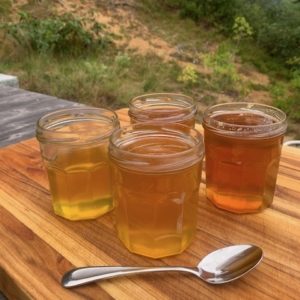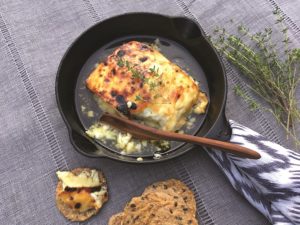I tend to look at things and see not only what they are but what they might become. It drives Christopher a little crazy, since it means that the check boxes on our to-do lists are never completely ticked. But this tendency can come in handy. Perhaps it’s the reason I became a psychologist, a profession geared to thinking not only about what is but about what could be.
I’m sure that’s what allowed us to become the stewards of Wiley Cottage. As I stood in front of the tiny three-season structure with no flashing, a quantity of mice, and a questionable bathroom, I saw the possibilities — though it took some time for them to come into view for Christopher.
The moment we pushed our way through the giant decades-old rhododendron (now affectionately named Jabba the Hutt), I pictured a circular perennial garden in front. I imagined a kitchen garden of raised beds behind the house. And ever since my friend and garden muse, Tim Callis, introduced me to the ideas of garden designer Piet Oudolf, I’ve longed to nurture an indigenous meadow, beautiful and wild, something pollinators would appreciate.
Slowly, over time, I began to stake out these possibilities. During the pandemic I turned my attention to the sandy slope that would be the meadow. With advice from Tim and a stack of books on wild gardens, I planted feather grass, asters, milkweed, and larkspur.

In my imagination, the Cottage would have beehives. Early on, the universe smiled upon me and led me to cross paths with Rebecca Mattarazi, a Provincetown resident of many talents, among them the keeping of bees. She came to see if we had a suitable place for a hive — a location that would provide warmth, protection, and access to water — and within a week she had established a colony.
Christopher and I love the hive and its industrious residents. In the hot months, we watch their comings and goings. When Jabba the Hutt is in bloom there are so many bees tucked into the papery flowers that the whole giant shrub seems to hum and vibrate. During storms and in the cold months we worry about them and hope they’re OK in there, snuggled together to stay warm.
Rebecca tells us they are Italian bees — molto bene. And that, as with farming, rain and sun have a lot to do with the harvest. She notes that this year’s spring and summer rains meant a better year for clethra (sweet pepperbush), a major source of high summer nectar here.
Wiley Cottage honey has a slightly greenish tint, and its aroma is heavy with clethra. But its flavor is also affected by the other kinds of nectar the bees gather earlier in the season from the blooms of shad, then blueberry and beach plum.
Rebecca can distinguish Wiley Cottage honey from the other hives she tends by the color, aroma, and taste — honey terroir, if you will.
This August, she gave us four jars of honey — two from our hive and two from one in Provincetown. They immediately put me in mind of a recipe created by Seattle chef Sara Dickerman and featured in the Essential New York Times Cookbook.
The premise: transformed by heat and gilded with honey, a hard block of feta becomes something completely different. At once sweet and salty, the molten cheese is perfect slathered on slices of crusty bread.
Use the best feta you can get your hands on — imported sheep’s milk, ideally. But even if all you can get is the supermarket variety, the preparation is still much more delicious than it should be for something so simple.
I make a batch and we sit on the screened porch in the welcome cool of a September evening, looking across the meadow garden. I imagine its next stages. Right now, in the distance, we can see the bees doing their work, transforming nectar into honey. In spite of everything going on in the world, I feel a hopefulness rooted in seeing not only what is but what could be — on this sandy slope and everywhere.

Roasted Feta With Honey
1 8-oz chunk of sheep’s milk feta
2 Tbsp. extra-virgin olive oil
2 Tbsp. local honey
Freshly ground black pepper
Crusty bread, toasted pita, or crackers
Preheat the oven to 400 degrees.
Select a small oven-proof dish or pan (I use a 6-inch cast-iron skillet). Blot the feta dry, place it in the pan, and cover it with the olive oil. Bake until the cheese is soft and springy to the touch, but not melted, about 8 to 10 minutes. Remove the cheese from the oven.
Preheat the broiler. Slowly pour the honey over the cheese and spread it evenly with the back of a spoon or a pastry brush to paint the surface of the feta with it. Broil until the top of the cheese browns and just starts to bubble. Season to taste with black pepper.
This dish is best served immediately from the oven and is perfect for cool early autumn evenings. It does not reheat well, so encourage your guests to gobble it all up.



